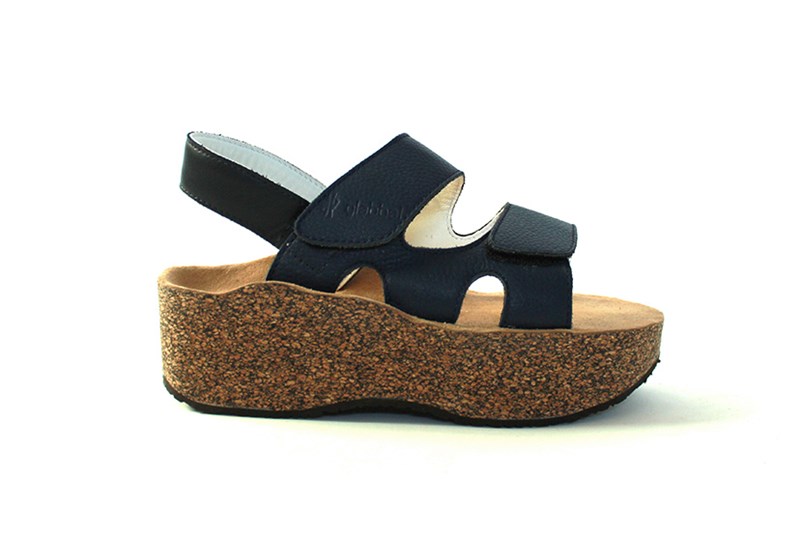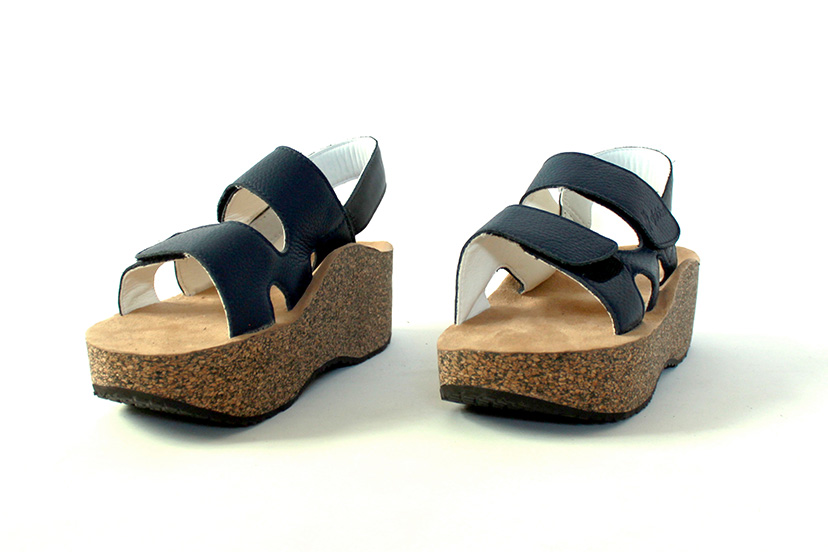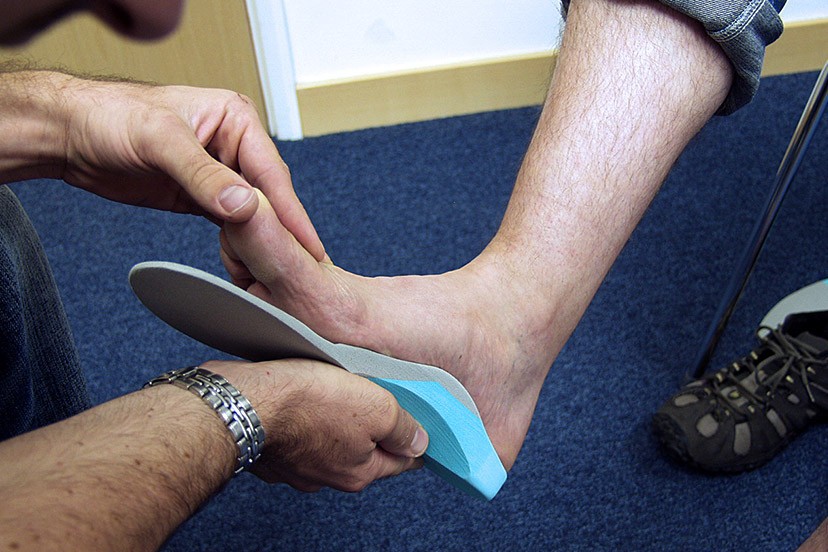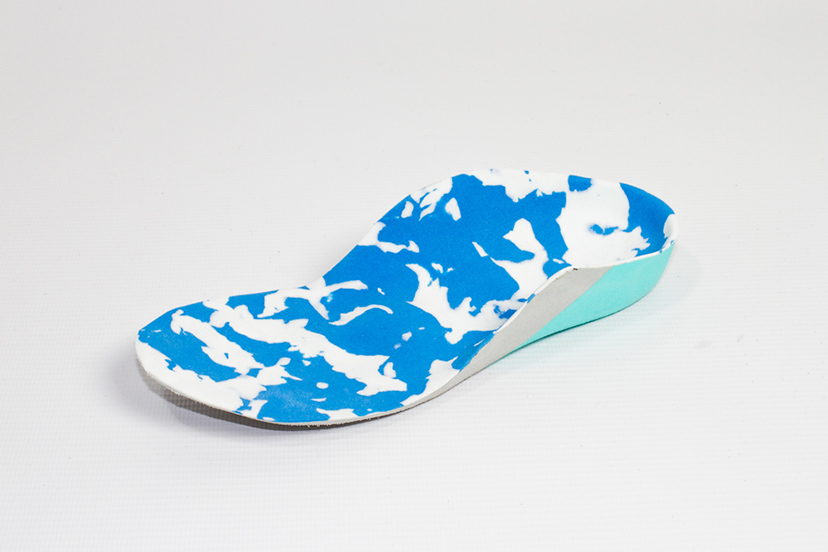
25 April 2019
Any regular wearer of bespoke insoles, or ‘inserts’ will tell you how difficult it can be to find appropriate footwear to accommodate them that are comfortable enough to be worn day to day. This can be even trickier for patients during the summer months when socks, boots and trainers (which are ideal for fitting insoles in) are normally swapped out for flip flops and sandals.
A LOC patient, who wears insoles every day to help her with her complex foot pain, approached us with a request to make a pair of bespoke sandals with built-in insoles to wear during the summer.

As with our traditional bespoke insole manufacturing process, to start with, a Paromed CAD/CAM system scans the foot, producing a 3D image of the sole. A clinician will then determine the amount of wedging or modelling that is required for the fore and hind foot using further CAD rendering. Each prescription is unique to a patient’s foot, so even if insoles are required for both feet it is unlikely that they will look the same.
After this, the modified 3D files are sent to a milling machine, which uses a robotic arm on the end of a drill bit to carve out the insole from a blank of ethylene-vinyl acetate (EVA) – a high-density foam-like copolymer plastic. But, in order to create these bespoke sandals, the 3D scans had to be milled out of a similar material but with a cork layer, with different prescriptions for both the left and right foot.

After being milled, the cork soles are inspected by a clinician and go through the refining and smoothing process by hand to ensure that there are no sharp edges or bumps. Velcro straps (a great choice for shoes that need insoles, as they fasten the foot securely) were then added to each shoe before the patient could try them on.

Above: Bespoke orthotic insole ready to be worn
An insole is a contoured orthosis that alters the biomechanics of the foot and ankle. They are removable devices, which are placed inside a shoe in order to provide additional support for the feet and joints. They can be used to treat a range of conditions, including back pain, plantar fasciitis, diabetes and arthritis and can help patients to avoid surgery to fix flat feet.
Standard off-the-shelf insoles are not as effective as custom-made insoles simply because they cannot be individually tailored to address specific biomechanical issues. Insoles that you can purchase from any pharmacy or running shop are typically sold based on shoe size, but most of us do not have a standard size, let alone, symmetrical feet. These insoles are often cut to fit but do not offer the same level of precision as an entirely bespoke, medical orthosis.
Structured trainers or boots are a popular choice for patients who need supportive, comfortable shoes for their insoles. For orthotic insoles to work effectively, consider a pair of shoes that:
If the idea of having to wear your insoles with socks and trainers during the hot summer months is unappealing, get in touch today so we can help you to create a pair of orthotic shoes or sandals to see you through the summer months.
An insole is a contoured orthotic device which alters the characteristics and biomechanics of the foot and ankle area. Biomechanics are concerned with mechanical laws and how they affect the living body, especially the musculoskeletal system.
They are removable devices, often made from plastic, that are designed to fit inside a shoe to provide additional support for your feet. As well as offering shock absorption, an insole can help distribute the weight of your body more effectively across the foot and can be made bespoke to cover a range of biomechanical conditions.
If you have symptoms in your feet, ankles, hips or your lower back that are intermittent or were not there to start with in early life, and have started to cause you pain over a period of time, bespoke orthotic insoles could be an excellent option.
If you have already tried rest, icing, compression and elevation and your feet have not recovered, we recommend a biomechanical assessment to consider the possibility of insoles. They are a non-invasive approach to treatment and in many cases, are a great option for symptoms that are not severe enough to warrant surgical intervention. Alternatively, they can be considered as an option prior to surgery.
We will send patients away when an insole is not appropriate, if a patient is suffering with iliotibial band syndrome for example, the problem can be helped with physiotherapy and a stretching programme. That’s what our biomechanical assessment is all about; determining whether there would be any benefit from altering the alignment of your feet.
Insoles are made from varying densities of a plastic called ethylene-vinyl acetate (EVA) which is a plastic that can be reinforced if necessary. The density changes depending on the amount of cushioning and support required, and can be split throughout any insole. Higher density EVA will often be used towards the back of the foot, where more support is generally required, and lower density EVA to the forefoot where more cushioning is needed.
We can also produce insoles from carbon fibre which are suited to more supportive orthoses, however carbon fibre cannot be manipulated once it has been milled out. While it provides excellent support, it is not always the most appropriate of materials.
No one fully knows what causes bunions to form, certainly family history plays a part, as do ill-fitting shoes and shoes which are too narrow but also a mechanical history of overpronation when the foot rolls inwards as you walk, can be a factor.
The technical term for bunions is hallux valgus, and although more studies are required, anecdotally we have seen that bunions can be aided by an insole holding the medial arch up for longer while walking, which can slow the rate at which a bunion develops or worsens. Although we cannot help with the hereditary aspect, we can advise on footwear and determine if the mechanics of the foot can be improved through biomechanical assessment.
Insoles can be made to fit into any shoe, but will be designed to be worn in one pair of shoes that you wear most of the time, or for a specific activity that aggravates your symptoms. Some shoes are easier to fit with orthotics than others, such as trainers, walking boots and flat plimsolls. Your choice of shoe also affects the way the insole is manufactured and will be discussed during your initial assessment. A men’s Italian dress shoe, for example, will require a smaller insole than that of a running shoe. We then must determine which one represents usage 70% of the time and then we can make an insole appropriate to that shoe.
Yes, over the years we have developed numerous insoles for those who need to wear high heels for work, or spend a lot of time in them. We have fitted insoles into ladies court shoes on several occasions, though the more fitted the shoe, the more difficult it is to wear an insole with it. The more specific the insole requirement, the more specific the insole must be. Speak to one of our clinicians if you would like advice on orthotics for a specific shoe type.
Proprioceptive insoles have specific adaptations, like nodes, added to the top surface of the insole in order to stimulate nerve clusters on the plantar surface of the foot in a different way so that when you walk, the nerves in the foot are stimulated to provide more feedback as it is bearing weight.
Proprioceptive nodes are not required for runner’s insoles but are helpful to patients with a neurological deficit. They help with sensory feedback to improve balance and give the brain more information about your positioning every time your foot hits the ground, which should help you walk more naturally.
We have the following facilities and amenities at our Kingston Upon Thames location:
We also have the Gait Laboratory for orthotics patients and Onsite Manufacturing for speedy turnarounds and adjustments whilst you wait.
LOC’s clinic is based in the University of Salford’s Podiatry Department and provides treatments for orthotics, scoliosis, pectus deformities, positional plagiocephaly and club foot.
It is also the base for LOC’s northern OSKAR clinic which is run by Sam Walmsley, clinical director of LOC, in conjunction with Elaine Owen MBE MSc SRP MCSP.